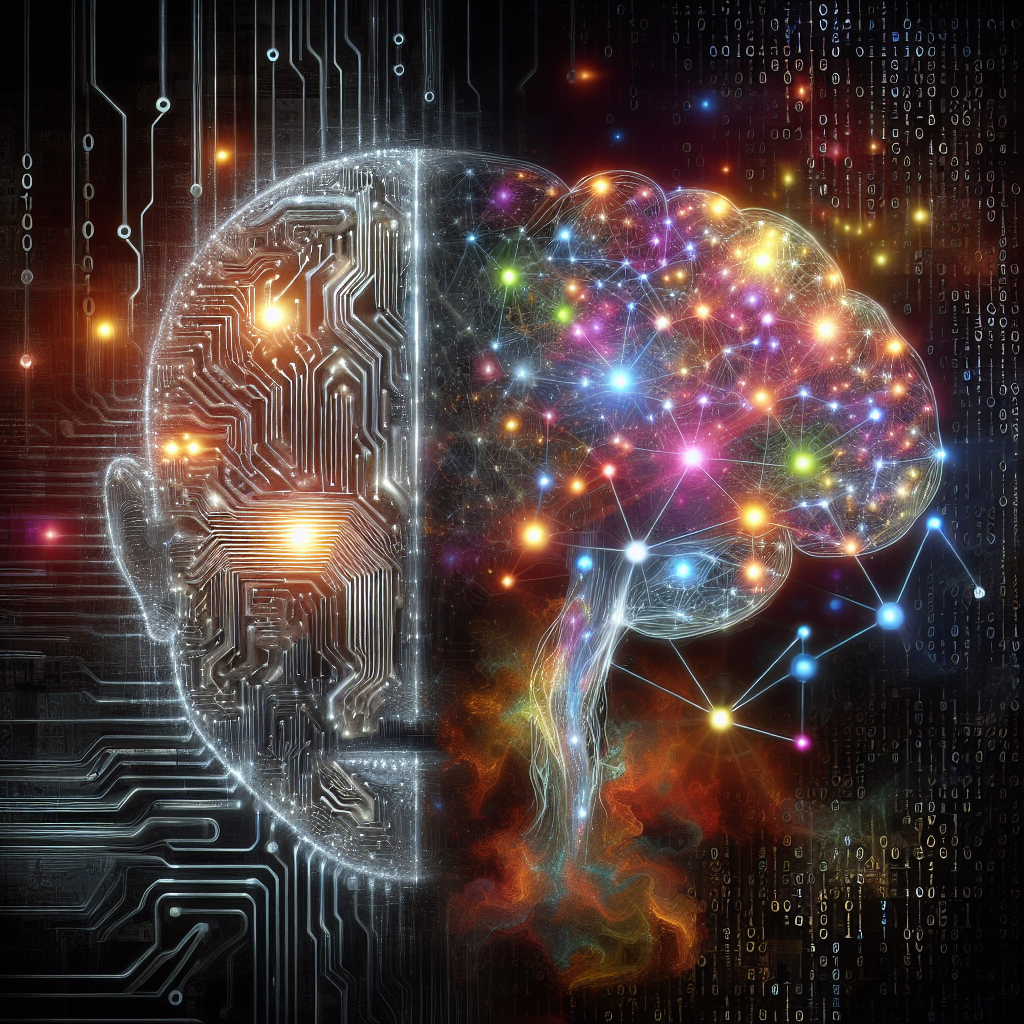Artificial Intelligence (AI) and Machine Learning (ML) are two closely related technologies that have been gaining significant attention in recent years. Both AI and ML have the potential to revolutionize various industries, from healthcare and finance to transportation and entertainment. However, despite their similarities, there are key differences between the two technologies that are important to understand.
AI refers to the simulation of human intelligence in machines that are programmed to think and act like humans. This includes tasks such as speech recognition, problem-solving, learning, and decision-making. AI can be further divided into two categories: narrow AI and general AI. Narrow AI, also known as weak AI, is designed to perform a specific task, such as playing chess or recognizing objects in images. General AI, on the other hand, is the goal of creating machines that can perform any intellectual task that a human can do.
Machine Learning, on the other hand, is a subset of AI that focuses on the development of algorithms that allow computers to learn from and make predictions or decisions based on data. In other words, ML enables machines to learn from experience without being explicitly programmed. ML algorithms can be divided into three main types: supervised learning, unsupervised learning, and reinforcement learning. Supervised learning involves training a model on labeled data, unsupervised learning involves training a model on unlabeled data, and reinforcement learning involves training a model through trial and error.
While AI and ML are often used interchangeably, it is important to understand that AI is a broader concept that encompasses various technologies, including ML. ML is a specific approach to implementing AI, using algorithms to enable machines to learn from data. In other words, ML is a subset of AI.
Exploring the Possibilities of AI and Machine Learning
The possibilities of AI and ML are vast and continue to expand as technology advances. Some of the key applications of AI and ML include:
– Healthcare: AI and ML are being used to improve diagnostics, personalize treatment plans, and predict patient outcomes. For example, ML algorithms can analyze medical images to detect diseases such as cancer at an early stage.
– Finance: AI and ML are being used to detect fraud, automate trading, and personalize financial services. For example, ML algorithms can analyze financial data to identify patterns and make predictions about market trends.
– Transportation: AI and ML are being used to improve autonomous vehicles, optimize traffic flow, and enhance logistics operations. For example, AI algorithms can analyze traffic data to recommend the most efficient route for a delivery truck.
– Entertainment: AI and ML are being used to personalize content recommendations, enhance gaming experiences, and create realistic virtual environments. For example, AI algorithms can analyze user preferences to recommend movies or music that they are likely to enjoy.
In addition to these applications, AI and ML are also being used in a wide range of other industries, including retail, manufacturing, and agriculture. As technology continues to advance, the possibilities of AI and ML are only expected to grow.
Frequently Asked Questions about AI and Machine Learning
Q: What is the difference between AI and ML?
A: AI is the broader concept of simulating human intelligence in machines, while ML is a specific approach to implementing AI, using algorithms to enable machines to learn from data.
Q: What are some examples of AI and ML applications?
A: Some examples of AI and ML applications include healthcare diagnostics, financial fraud detection, autonomous vehicles, content recommendations, and personalized treatment plans.
Q: How are AI and ML being used in healthcare?
A: AI and ML are being used in healthcare to improve diagnostics, personalize treatment plans, and predict patient outcomes. For example, ML algorithms can analyze medical images to detect diseases at an early stage.
Q: How are AI and ML being used in finance?
A: AI and ML are being used in finance to detect fraud, automate trading, and personalize financial services. For example, ML algorithms can analyze financial data to identify patterns and make predictions about market trends.
Q: How are AI and ML being used in transportation?
A: AI and ML are being used in transportation to improve autonomous vehicles, optimize traffic flow, and enhance logistics operations. For example, AI algorithms can analyze traffic data to recommend the most efficient route for a delivery truck.
Q: How are AI and ML being used in entertainment?
A: AI and ML are being used in entertainment to personalize content recommendations, enhance gaming experiences, and create realistic virtual environments. For example, AI algorithms can analyze user preferences to recommend movies or music that they are likely to enjoy.
In conclusion, AI and ML are two powerful technologies that have the potential to revolutionize various industries. While AI is the broader concept of simulating human intelligence in machines, ML is a specific approach to implementing AI, using algorithms to enable machines to learn from data. The possibilities of AI and ML are vast and continue to expand as technology advances, with applications in healthcare, finance, transportation, entertainment, and many other industries. As technology continues to advance, the possibilities of AI and ML are only expected to grow, leading to exciting new developments in the future.

